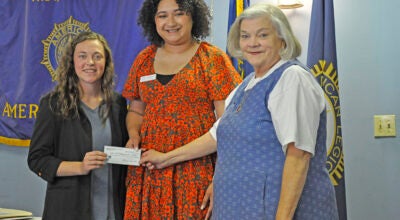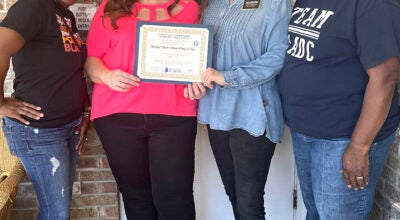Responders enforce car safety for kids
Published 4:00 am Friday, April 24, 2015
First -responders across Pike County took steps this week to be more educated in the proper uses and installations of car seats and child restraint systems for motor vehicles.
Statistics show the leading cause of death in children ages 3-14 in the United States is motor vehicle crashes. In 2011 more than 650 children under the age of 12 died in a motor vehicle crash and an additional 148,000 were injured in crashes.
The largest factor that seems to be affecting the use of child restraints are the constant misuse of safety devices and restraints. According to SafeRide4Kids anywhere from 72 to 84 percent of child restraints are critically misused, and common forms of misuse include using the wrong seat for a child’s age, height or weight, facing child forward too soon or leaving the seatbelt or harness too loose.
Detective Mike O’Hara says the problems can be easily remedied, creating a safer riding environment for children.
“We’ve basically been learning the guidelines by when a child need to be moved from an infant only seat or a rear or font facing car seat to a booster seat,” O’Hara said. “All car seats have age or height limits usually, but the American Academy of Pediatrics put out what they suggest are the guidelines.”
O’Hara said that while they were just guidelines, the APA’s suggestions worked well alongside the law.
“As law enforcement officers, we have to address the law side,” O’Hara said. “We can also give educational opportunities to parents. We can tell them that’s what the APA suggest. They APA wants the child to stay rear facing for as long as possible, but the car seats and the law do not require them to be rear facing.”
However, it’s important to note that just because a child’s legs are touching the back seat of the car, or even bending so they’ll fit, it’s not unsafe or a reason to turn a child around too soon.
Safety seats have been shown to reduce fatal injuries to children by 71 percent for infants and 54 percent for toddlers ages 1 to 4.
“Most of the time, they have the car seat installed properly,” O’Hara said. “Some families do come in there and only have one or two things wrong. We did an event a year to two years ago and we had people drive in on the way to the beach. One woman did not realize that one child could reach across and unbuckle the other child’s seat in the car. It’s not that they necessarily that they do it completely wrong, there’s just some things that aren’t done right.”
But, the rate of child restraints has been improving over the last two decades. In 1998, the use of child restraints was only at 15 percent, but that number sky rocketed in 2013 with 91percent of parents actively using child restraints. And, as of April 2013, 48 states report having booster seat laws requiring the use of child restraints, booster seats or other appropriate safety devices with Alabama being included.
Alabama law requires children of certain ages and sizes be seated I appropriate child car seats, and failure to do so can result in a $25 fine. Children up to a year old or 20 pounds are required to be in a rear facing, infant-only or convertible car seat, children 1 to 5 years old or 40 pounds are required to be in a forward-facing car seat and 5 to 6 year olds are required to be in a booster seat.
Law enforcement officers, first responders and law enforcement officers attending the course at First Baptist Church in downtown Troy will receive their certifications today saying they are able to install a car seat, check the installation of a car seat and educate a parent or guardian on the proper installation of a car seat. O’Hara said the certifications would be valid for two-years.
The course will conclude with an outside event from 10 a.m. today until noon, and anyone is invited to come to the First Baptist Church parking lot to have their car seats checked for proper installation.
“We encourage everybody to come out,” O’Hara said. “Even if you don’t have children but you’re involved in transporting a child, you need to know the proper way to transport children according to the law and how to do it safely. There are some parents that don’t realize, when you have larger children, when they get too big or too wide to be in a car seat, if they aren’t tall enough to be in a car seat a seatbelt would be considered the child restraint.”





